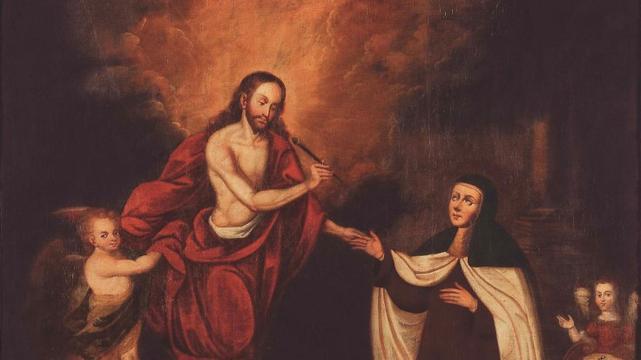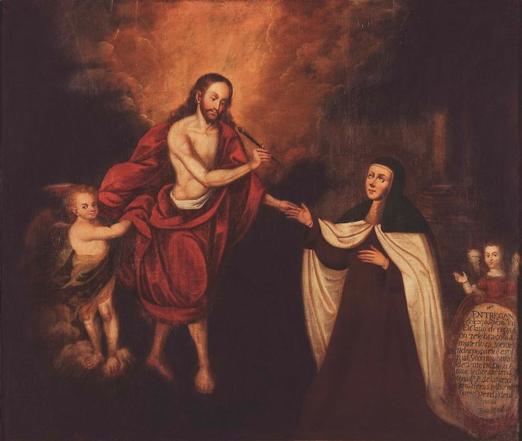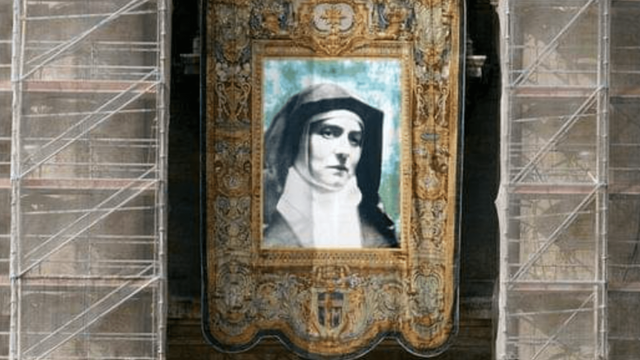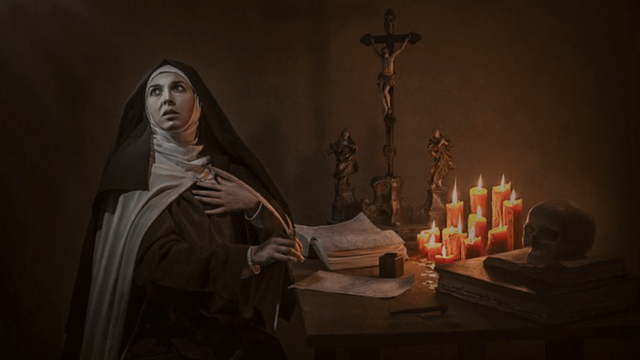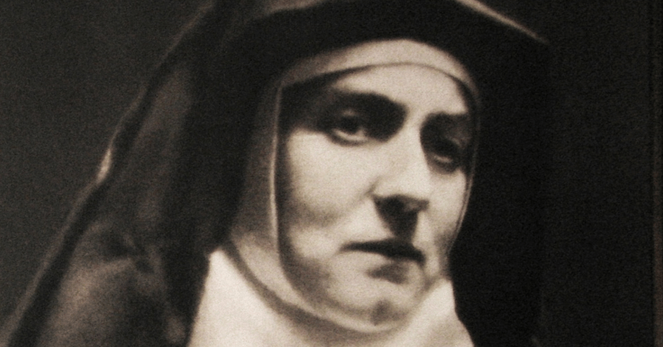9 August: St. Teresa Benedicta of the Cross Stein
August 9
SAINT TERESA BENEDICTA OF THE CROSS STEIN
Virgin and Martyr
Memorial
In houses in Europe: Patroness of Europe, Feast
Edith Stein was born to a Jewish family at Breslau on October 12, 1891. Through her passionate study of philosophy, she searched after truth and found it in reading the autobiography of Saint Teresa of Jesus. In 1922 she was baptized a Catholic and in 1933 she entered the Carmel of Cologne, where she took the name Teresa Benedicta of the Cross. She was gassed and cremated at Auschwitz on August 9, 1942, during the Nazi persecution, and died a martyr for the Christian faith after having offered her holocaust for the people of Israel. A woman of singular intelligence and learning, she left behind a body of writing notable for its doctrinal richness and profound spirituality. She was beatified by Saint John Paul II at Cologne on May 1, 1987 and canonized in Rome on October 11, 1998. On October 1, 1999 Saint John Paul II proclaimed Saint Teresa Benedicta of the Cross a Co-Patroness of Europe.
From the common of martyrs or of virgins
THE SECOND READING
(Edith Stein Werke (Freiburg, 1987), 11:124-126)
From the spiritual writings of Saint Teresa Benedicta of the Cross
Ave Crux, spes unica!
We greet you, Holy Cross, our only hope! The church puts these words on our lips during the time of the passion, which is dedicated to the contemplation of the bitter sufferings of our Lord Jesus Christ. The world is in flames. The struggle between Christ and antichrist rages openly, and so if you decide for Christ you can even be asked to sacrifice your life.
Contemplate the Lord who hangs before you on the wood, because he was obedient even to the death of the cross. He came into the world not to do his own will but that of the Father. And if you wish to be the spouse of the Crucified, you must renounce completely your own will and have no other aspiration than to do the will of God.
Before you, the Redeemer hangs on the cross stripped and naked, because he chose poverty. Those who would follow him must renounce every earthly possession.
Stand before the Lord who hangs from the cross with his heart torn open. He poured out the blood of his heart in order to win your heart. In order to follow him in holy chastity, your heart must be free from every earthly aspiration. Jesus Crucified must be the object of your every longing, of your every desire, of your every thought.
The world is in flames: the fire can spread even to our house, but above all the flames the cross stands on high, and it cannot be burnt. The cross is the way which leads from earth to heaven. Those who embrace it with faith, love, and hope are taken up, right into the heart of the Trinity.
The world is in flames: do you wish to put them out? Contemplate the cross: from his open heart, the blood of the Redeemer pours, blood which can put out even the flames of hell. Through the faithful observance of the vows, you make your heart open; and then the floods of that divine love will be able to flow into it, making it overflow and bear fruit to the furthest reaches of the earth.
Through the power of the cross, you can be present wherever there is pain, carried there by your compassionate charity, by that very charity which you draw from the divine heart. That charity enables you to spread everywhere the most precious blood in order to ease pain, save and redeem.
The eyes of the Crucified gaze upon you. They question you and appeal to you. Do you wish seriously to renew your alliance with him? What will your response be? Lord, where shall I go? You alone have the words of life. Ave Crux, spes unica!
RESPONSORY
℟ We preach Christ Crucified, a scandal to the Jews and foolishness to the pagans, * but for those who are called, whether they be Jews or Greeks, we preach Christ, the power of God and the wisdom of God.
℣ The desire of my heart and my prayer rises to God for their salvation; * but for those who are called, whether they be Jews or Greeks, we preach Christ, the power of God and the wisdom of God.
PRAYER
Lord, God of our fathers,
you brought Saint Teresa Benedicta
to the fullness of the science of the cross
at the hour of her martyrdom.
Fill us with that same knowledge;
and, through her intercession,
allow us always to seek after you, the supreme truth,
and to remain faithful until death
to the covenant of love ratified in the blood of your Son
for the salvation of all men and women.
Grant this through our Lord Jesus Christ, your Son,
who lives and reigns with you and the Holy Spirit,
God, forever and ever.
On Friday 29 July 2016, Polish Prime Minister Beata Szydło welcomed Pope Francis at the former Auschwitz-Birkenau camp. The Prime Minister and the Pope commemorated the victims of the Holocaust with joint prayers and the lighting of candles.
In the book of remembrance, Pope Francis wrote: “Lord, have mercy on your people! Lord, forgiveness for so much cruelty!“
Image credit:
Kancelaria Premiera / Wikimedia Commons (Public domain)
Catholic Church 1993, Proper of the Liturgy of the Hours of the Order of the Brothers of the Blessed Virgin Mary of Mount Carmel and the Order of Discalced Carmelites (Rev. and augm.), Institutum Carmelitanum, Rome.
#Carmelite #CoPatronessOfEurope #LiturgyOfTheHours #martyr #Memorial #StEdithStein #StTeresaBenedictaOfTheCross #virgin
